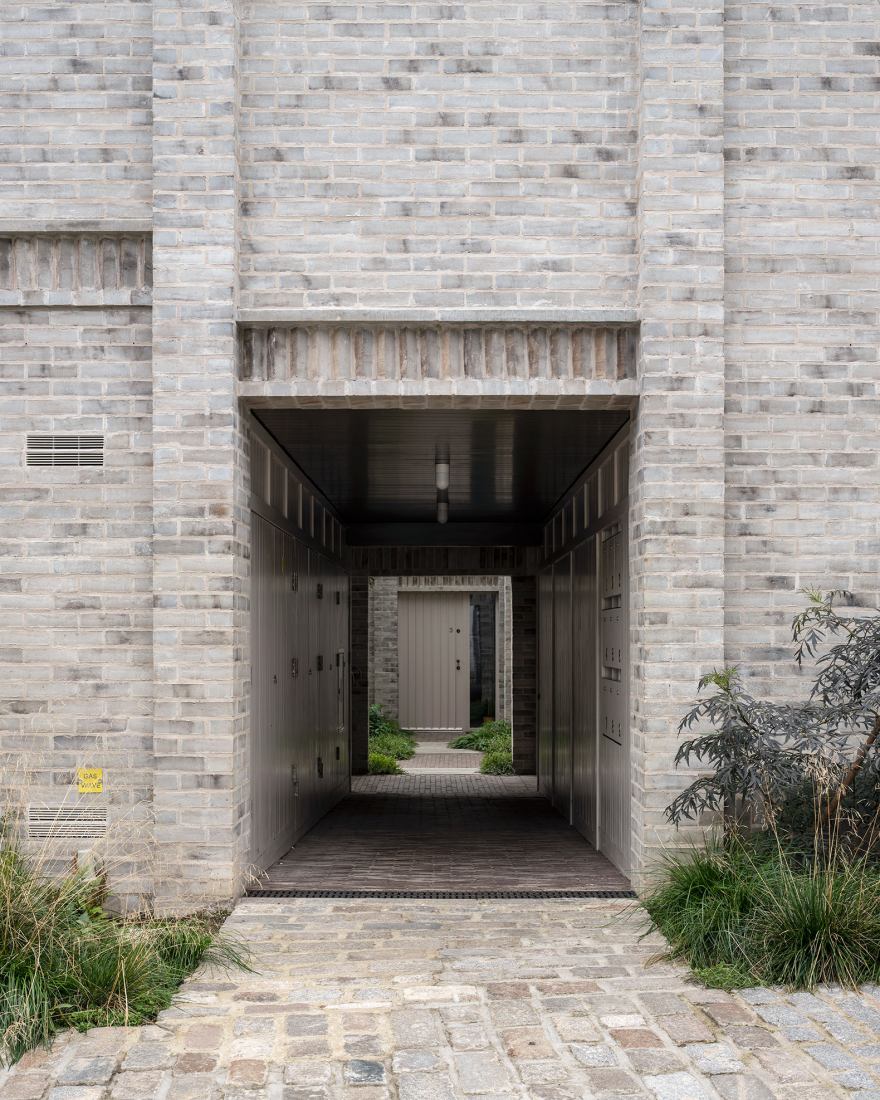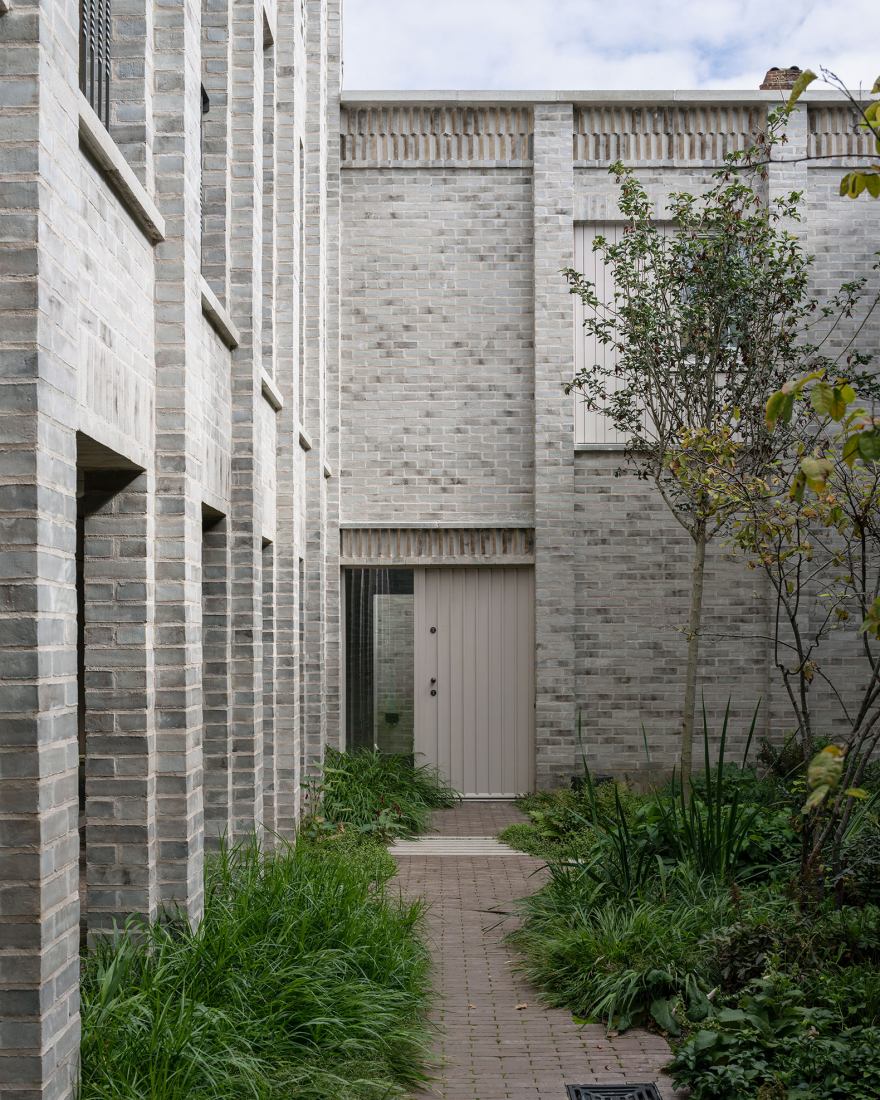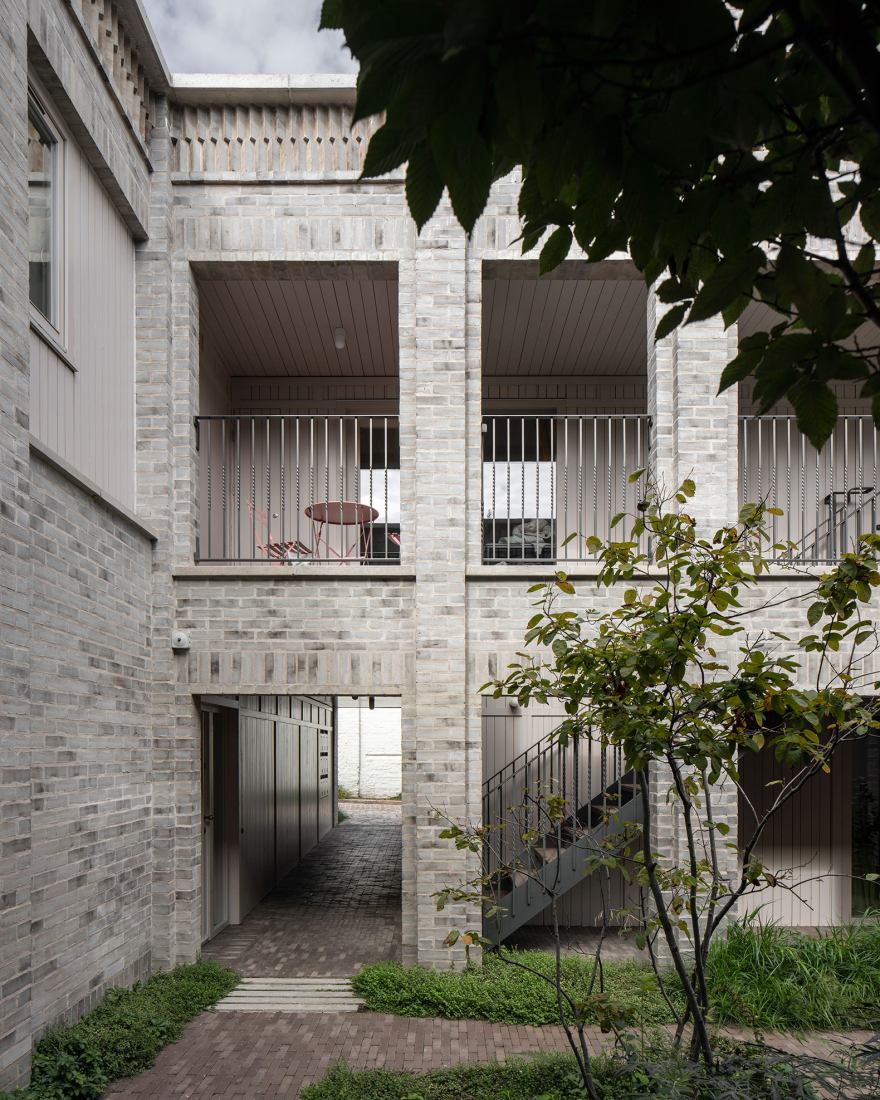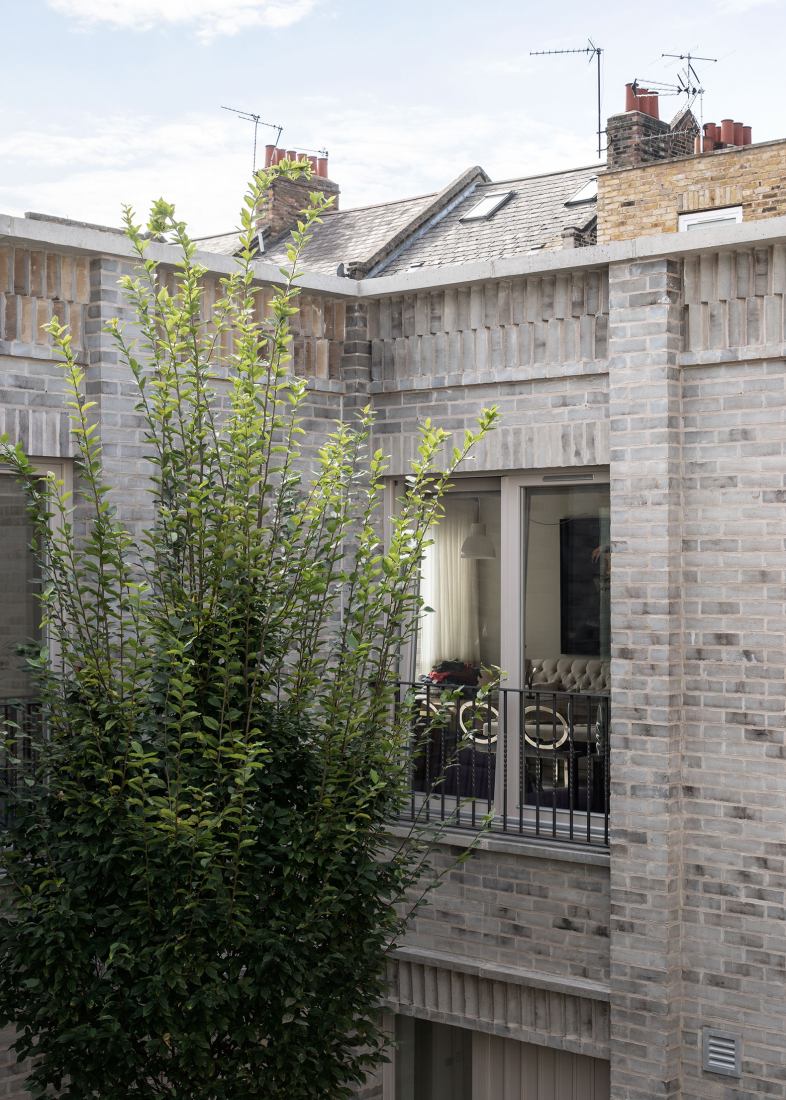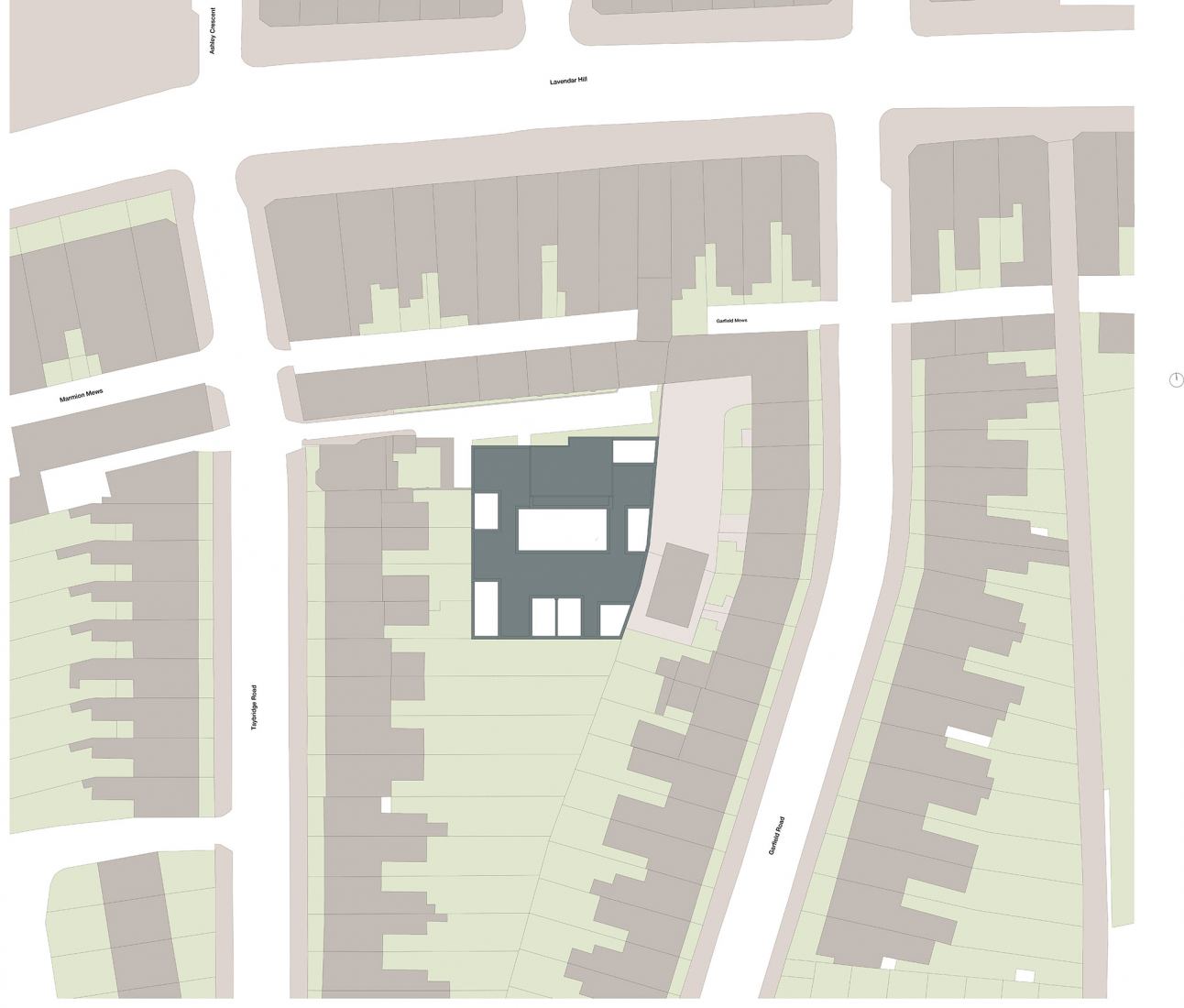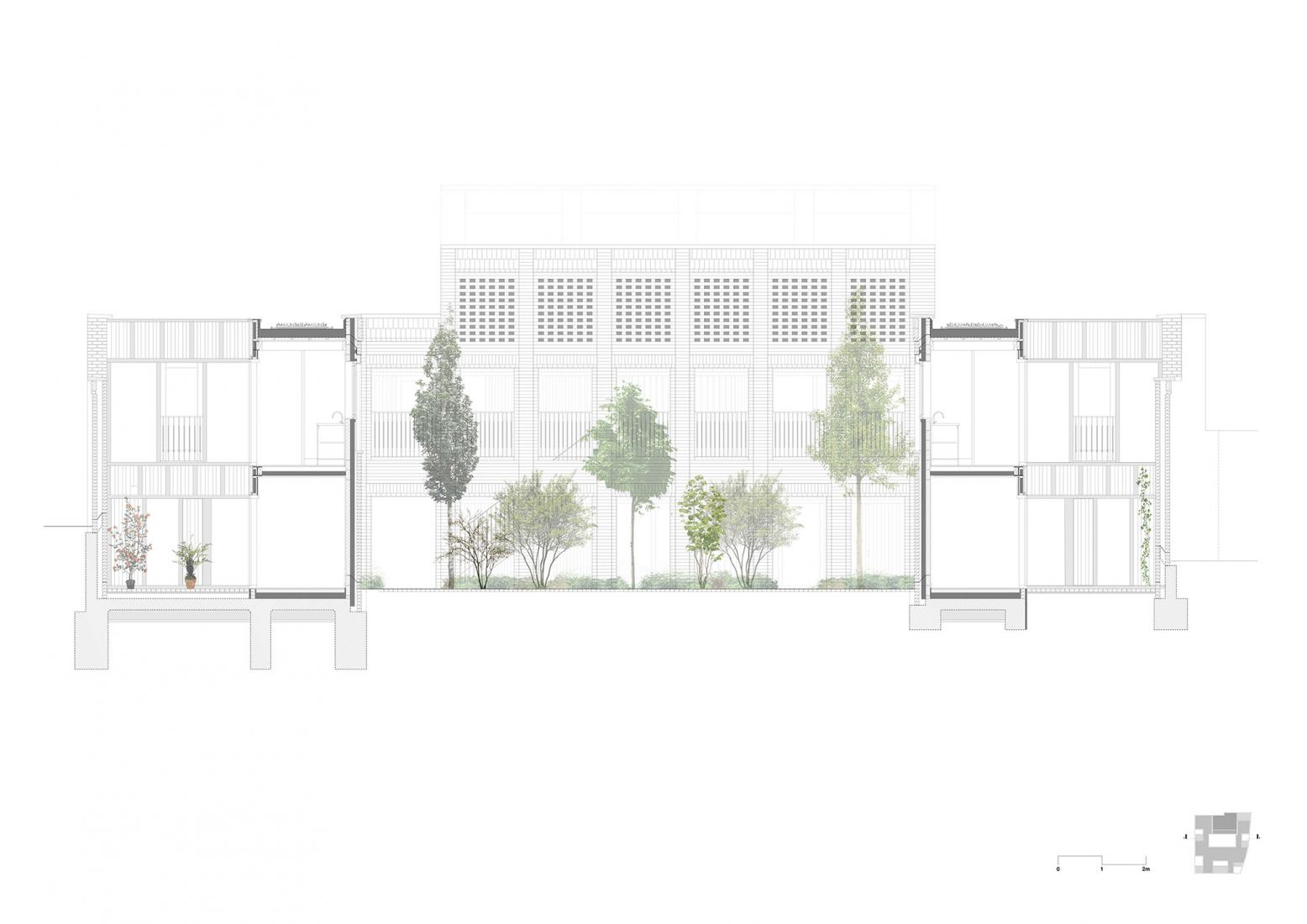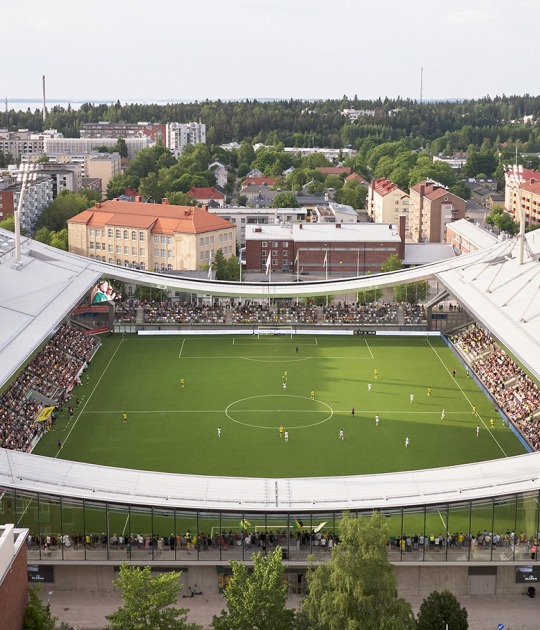The house has an interior alley, which separates the two-storey buildings, extended to three on the north side. A metal staircase leads to a private interior landing overlooking the plants and sedum planted in the garden.
The facades are influenced by the Victorian atmosphere of the neighbourhood, with pilasters dividing the facades, while ornamental friezes and lintels recall the building's industrial past. In the interior courtyard, bricks are finished in engobe, which, thanks to a layer of grey paint prior to firing, offers a diversity of tones. The flats have glass partitions and terraces that create a dialogue between indoors and outdoors.

Courtyard housing by Sergison Bates architects LLP. Photograph by David Grandorge & Danko Stjepanovic.
Description of project by Serginson Bates architects LLP
The project involves the redevelopment of a former sheet metal workshop first converted for use as offices in the 1980s into a community of courtyard houses with a shared garden at their centre. The triangular site is bounded on all sides by terraced houses and gardens that slope steeply towards the south and are accessed through an arched opening and inner mews street. This gives it a secluded, inward character, despite its proximity to the busy shopping and commuting street that links Clapham to Battersea.
Linked to the quiet mews to the north by a timber-lined passageway, the ensemble has a communal character. Inside and outside spaces merge in an informal way across various thresholds and levels: and clay brick pathways lead through the densely planted garden, to the apartments’ front doors where an area big enough for a couple of chairs can be used in the manner of a stoop.
The nine dwellings ranging in size from 65 to 105m2 are generally arranged around a private courtyard space at ground floor level and a timber-decked terrace on the first floor. Bedrooms are on the lower floor level, with windows opening onto communal or private courtyards. A winding stair leads to the first-floor living spaces, which are open to daylight and views. The interiors have the character of a light industrial workshop rather than a conventional domestic setting, with high ceilings of exposed ceiling joists, terracotta and oak-boarded floors and painted timber wall panelling. The arrangement of glazed screens and terraces reinforces the perception of a fluid set of internal and external rooms.
Whilst the building is generally two-storey high, it rises to three on the northern side, with a more imposing stepped facade to the mews. On the courtyard side its scale is attenuated by an open loggia accessed by a metal stairway leading to a first-floor external landing which provides both access and private amenity spaces overlooking the garden. Flat roofs planted with sedum and hardy flowering plants create a micro-green habitat.
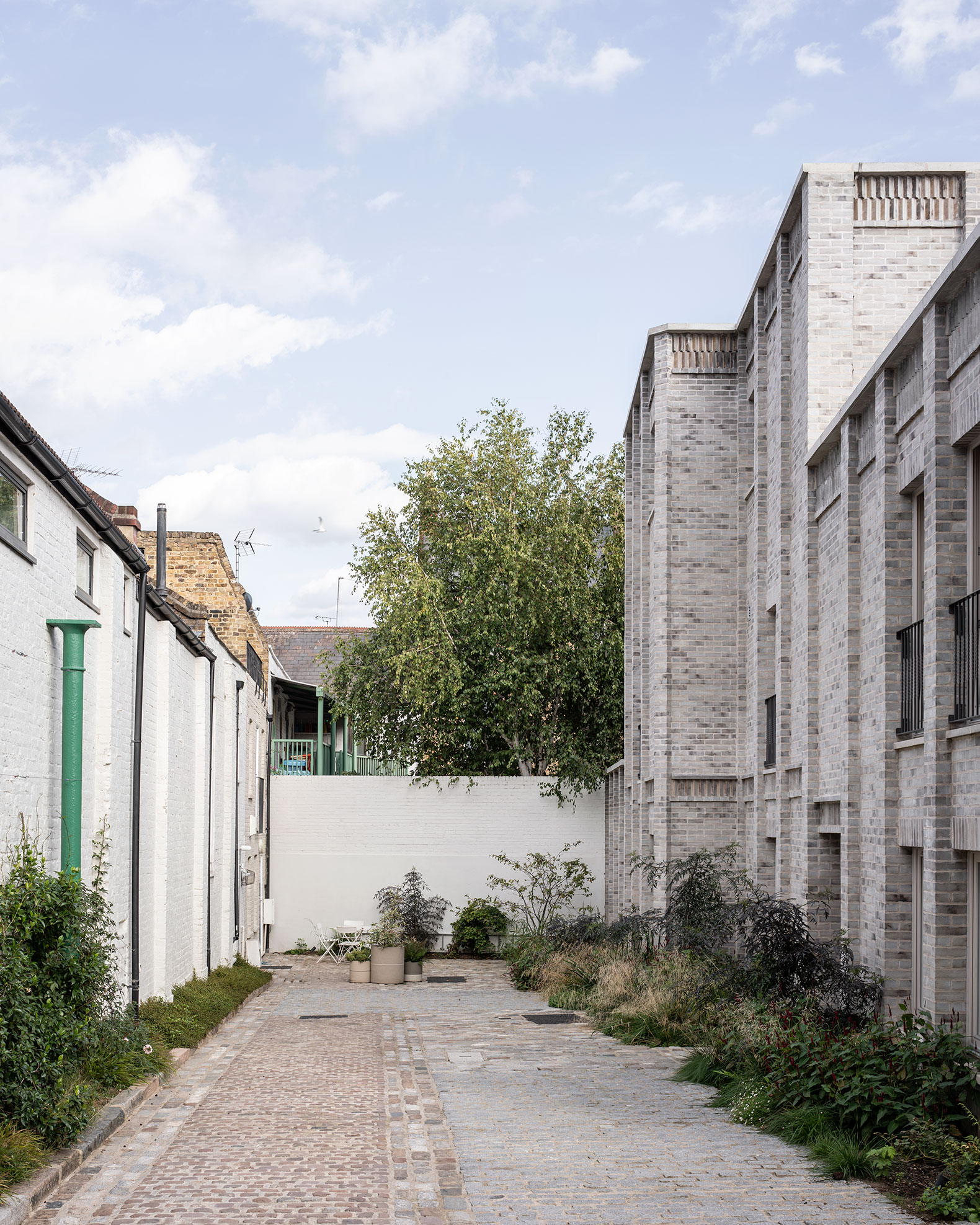
Courtyard housing by Sergison Bates architects LLP. Photograph by David Grandorge & Danko Stjepanovic.
Like the interiors, the new facades reflect the Victorian industrial heritage of the site. Vertical pilasters subdivide the facades lending them classically elegant vertical proportions, while twisted soldier course friezes and lintels have an ornamental character and evoke the sense of solidity and permanence of the robust warehouse-like industrial architecture of the past. The light grey slop moulded brick used for all external walls has an engobe finish – a coloured slip applied to the brick prior to firing that results in a variety of tints. Combined with a flush mortar joint, this gives the walls a handmade texture that is accentuated by changes in daylight.
Tucked away within the urban block and visible only partially through the gateway entrance at the end of the mews, the project is a case study in the re-appropriation of a residual brownfield site to house a small-scale urban community.






